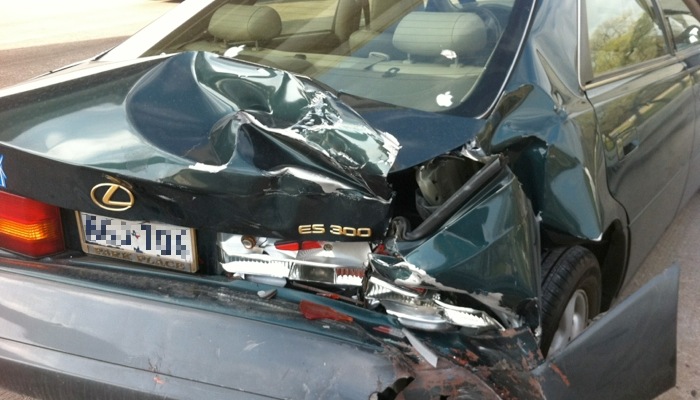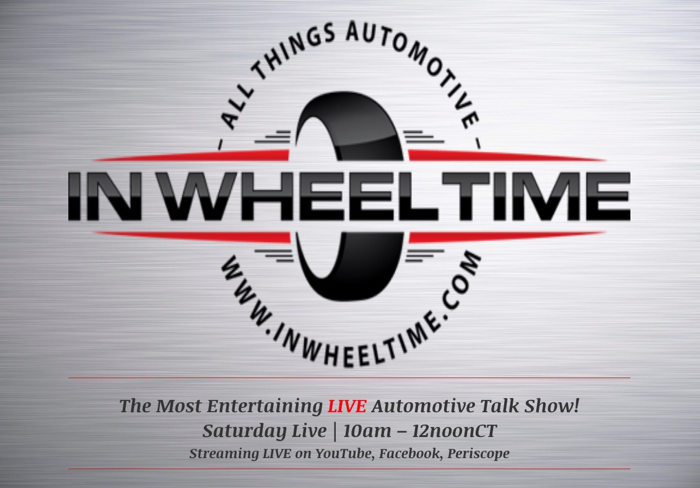I’ve been watching the development of autonomously driven vehicles for a few years now and part of me wondered, “Why?” Most of us enjoy the act of driving our vehicles. Yes, I’d like to switch to autopilot for my daily, traffic-congested commute, but the rest of the time, I think I’d prefer to be in control rather than a passive passenger.
I am reminded of this, every time I sell a Corvette. About half of the drivers want a manual transmission, because they like to shift. The eight-speed automatic transmission, available on the Stingray, shifts faster than any human is capable. If you want to win the race, get the automatic. “If you want to have fun,” my customers counter, “get the manual transmission.”
People like to drive. Why are we moving away from that? Here is something I’m passionate about: NOT getting killed while driving. I’ll bet you’re pretty much the same as me, in that respect. If not, may I recommend seeking out a mental health professional and beginning treatment today?
Here is something I’m passionate about: NOT getting killed while driving. I’ll bet you’re pretty much the same as me, in that respect. If not, may I recommend seeking out a mental health professional and beginning treatment today?
Those who have been with this blog, since its inception, may know that my electric vehicle journey began with a bang.
Literally.
A guy driving an SUV, rear ended my Lexus, crushing the rear end almost to the rear window. As his gigantic vehicle approached, I could clearly see the driver looking down and to his right, the standard texter pose. You see, the right lane of freeway had come to a stop, because a fracking water truck had rolled onto its side, on a curving exit ramp (for those of you from the DFW area, the University exit off of westbound I-30). I was on the overpass, looking down at the fracking truck, lying on its side. There were police on the scene already, and those of us that needed to exit at University, were waiting patiently.
As his SUV approached, I looked away from the rearview mirror, looking for an avenue of escape (no pun intended) (oh, who am I fooling? Pun WAS intended!) The lane to my left was moving at around 50 MPH and traffic was heavy, so there was no chance I could switch lanes to avoid the accident. There was nowhere I could go. I stood on the brake pedal, hoping that I would not get thrown into the car in front of me, while averting my eyes from the oncoming truck.
The SUV driver didn’t know we were all stopped because he wasn’t looking at the road at all.
I learned something about myself, in that moment: I do not want to see death coming. I will avert my eyes from it and wait.
As I stared forward, I heard the SUV’s brakes screech just before impact. The crash was so loud that the officers below all stopped what they were doing and looked up. One officer pointed to herself and motioned she was coming up to help us.
I looked around the interior of my car and everything was as before, with the one exception of the coin holder. It had sprung open from the force of the impact and coins had been thrown around the cabin. I was surprised that I felt fine. When the officer (and ambulance) arrived, she tried to convince me to get into the ambulance and go to the hospital, but I declined. The owner apologetically approached and said, “I’m sorry, I didn’t see you until the last second.”
I replied, “Of course you didn’t. You were too busy texting instead of paying attention!” He did not try to deny it at all and apologized once again.
So I’m really against texting while driving. Or reading books (yes, I’ve seen this happen). Or holding a phone to your ear. Or putting on makeup. Or anything that might distract you enough to kill me accidentally. All of these activities, except the application of makeup, can now be performed with minimal physical conflict with your responsibilities as a driver, thanks to the move toward the “connected vehicle.” I guess we’ll have to wait for Homer Simpson to invent the makeup gun to solve that last issue…
The connected vehicle began with your mobile phone. It may now be connected to your vehicle by USB for power and bluetooth for communication. If you can control your phone by voice command (like Siri on the iPhone), you don’t even have to touch your phone to:
- make outgoing, and receive incoming calls
- ask for driving directions
- add appointments to your calendar
- play songs or albums in your music library
- dictate outgoing text messages
- have incoming text messages read to you
- read a book
It seems that lately, when I see another driver weaving around in their lane (or mostly within their lane), or driving so slowly that everyone is steering around them to pass, that the reason is always the same: They’re texting.
This makes me so angry that I am tempted to flip the other driver off or roll down my window to employ colorful expletives to illustrate my opinion of their driving.
THIS SHOULD NOT BE HAPPENING TODAY!!!!
Most new vehicles produced over the last four years have the ability to allow hands-free calling. Even the most primitive flip phone I’ve seen recently allows the use of a headset or earpiece, freeing one’s hand to steer in an emergency situation. But still, every single day, I see people driving with one hand, while holding their phone to their head. Haven’t these people read Disconnect by Devra Davis? Well, on the bright side, Ms. Davis may be describing natural selection. Those that die off from cellphone-inflicted brain tumors or distraction-caused driving accidents may just be being selected by evolution for extinction.
I understand we all think we’re smarter, better, faster than we really are. We all think we’re better drivers than we are. Well, except for me. I’m a great driver. 😉 We all think we don’t need these new-fangled contraptions to keep us undistracted! But obviously, we’re all full of crap. Just Google “texting while driving.” Even law firms are posting distracted driving statistics to drum up business. Just a couple from the previous link:
- One out of four car accidents in the U.S. is caused by texting.
- Texting while driving is SIX TIMES more likely to cause an accident than driving drunk.
Then there are the images Google will find. Heartbreaking images. Many of these created as a public awareness campaign to curb accidents caused by texting while driving. Solutions have been proposed and some tried. Austin, Texas created a law banning texting while driving. The problem was that people would say they were making a call, checking navigation, playing a song, etc. The city modified the ordinance to say that holding any electronic device for any reason, while driving, is illegal. Time will tell if this will have an impact.
Solutions have been proposed and some tried. Austin, Texas created a law banning texting while driving. The problem was that people would say they were making a call, checking navigation, playing a song, etc. The city modified the ordinance to say that holding any electronic device for any reason, while driving, is illegal. Time will tell if this will have an impact.
Although I salute the new law, I doubt it will make a difference.
Some have proposed that mobile phone manufacturers put in a restriction that prevents a user from texting, if the phone detects it is moving above a certain speed. This would only work if ALL mobile phone providers were on board. Then the question is raised, “Can’t I text if I’m just a passenger?” Inevitably, one manufacturer would defect from the text ban group, in order to get a marketing advantage over other manufacturers.
So, it appears to be up to the car manufacturers to save us all. If cars could only connect seamlessly with mobile phones and allow interaction with these devices without having to handle them, the problem is solved.
Not so fast.
This only works if the vehicle owner knows how to use this connectivity.
How many of you have read your vehicle’s owner’s manual cover-to-cover? How about your smartphone’s manual?
Yeah, something else is required. The vehicle salesperson or manufacturer has to educate the customer on how the connectivity works. The customer also has to see the value in this to change their driving habits. After purchasing a vehicle, the customer wants nothing more than to hit the road and enjoy their new toy. The salesperson wants nothing more than to say goodbye and find the next customer (and commission). Neither wants to take this next, important step.
So, manufacturers have stepped in and begun automating driving.
My first experience with this was “Forward Collision Alert” and “Lane Change Alert” offered by General Motors on their vehicles. These seem designed for texters. What do texters commonly do that’s dangerous? Drift out of their lane (or off the road) and rear-end others. These two safety features attempt to address those problems. However, most drivers don’t use their turn signals to change lanes, so they turn off Lane Change Alert. Commuters, in heavy traffic, like to tailgate the car in front of them. Their drivers will turn off “Forward Collision Alert.”
Touché drivers! Care to parry, car makers?
Okay, How about “Lane Keep Assist” and “Forward Collision Alert with braking?” “Lane Keep Assist” gently steers the vehicle back to the center of the lane, if it is detected that the vehicle is drifting out of its lane. Of course, the driver can prevent this steering change by holding the wheel and gently steering against the change. This function is dependent on well-marked lane boundaries, so we’ll need to update the stripes on many of our roads. “Forward Collision Alert with Braking” just augments the beep or vibration, letting you know you’re about to rear-end another vehicle with the ability to stop the car completely. Already, I’ve seen advertisements where manufacturers are stating their FCAWB is better than other vehicle manufacturers’ systems.
To implement these features, cameras and other sensors have been added to vehicles to make them ‘aware’ of vehicles around them as well as the roads/lanes. These are items that will be needed to ever have autonomous driving, so they’re evolutionary changes with an obvious goal in sight: automated driving. Of course, all programs crash, so you’ll need to be able to take control manually, in the event of an emergency situation. This reminds me of this scene from “I, Robot,” where Will Smith decided it would be a good idea to take control of his autonomously driven Audi.
The next snag I see on the horizon, is the lack of standardization among manufacturers for autonomous driving systems. Part of how these systems work will eventually require that they understand how the other vehicles, around your vehicle, will respond to what your car is about to do. Then there’s the people who will disable the autonomous feature so they can have a commuting advantage over other drivers, whipping their cars in and out of lanes to pass automated vehicles. You just know that’s going to happen.
I understand where autonomous driving is coming from. We aren’t responsible enough as adults to drive without distraction, so we’re all being grounded from driving manually.
Sad, but probably true…


Comments